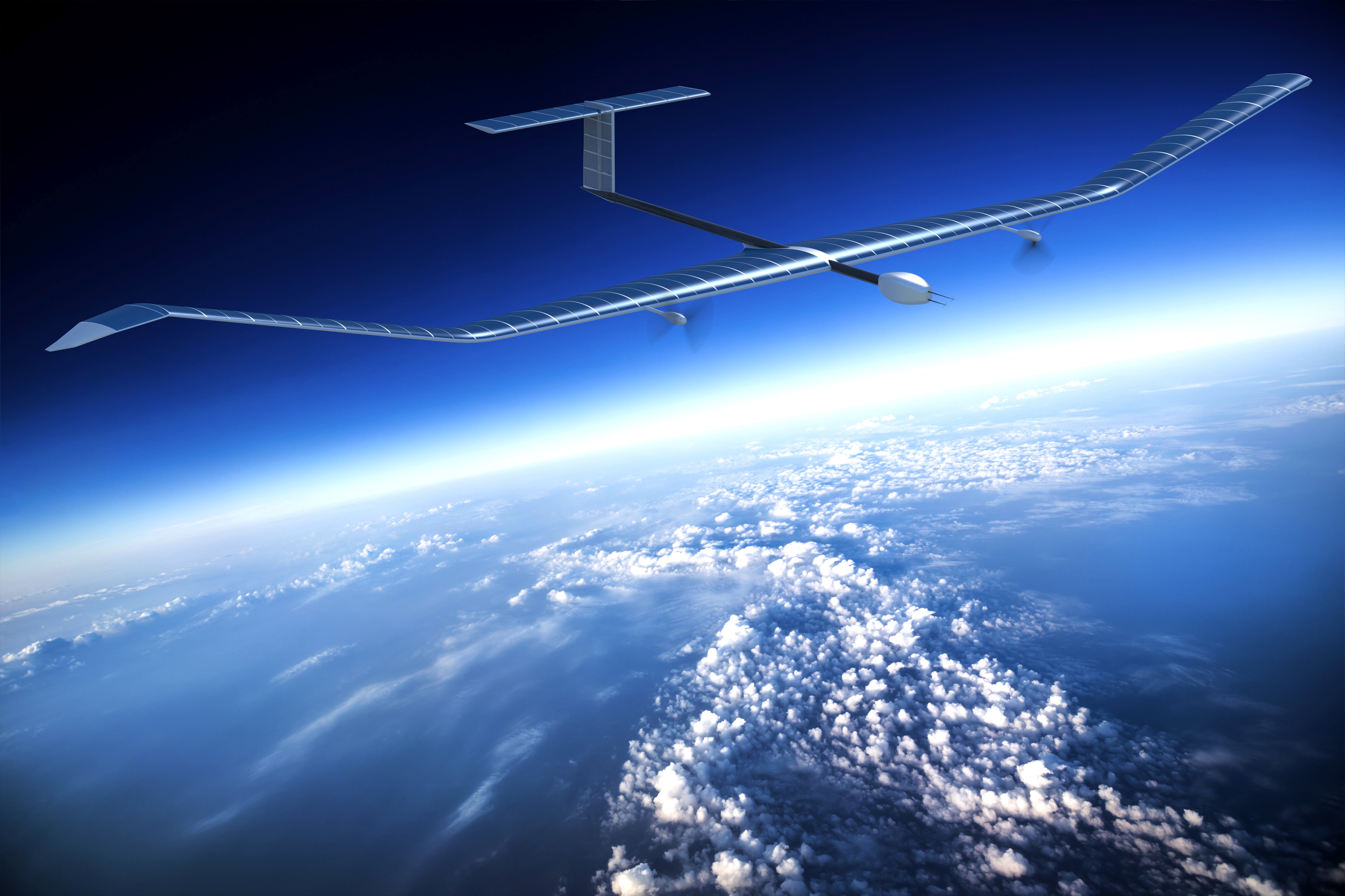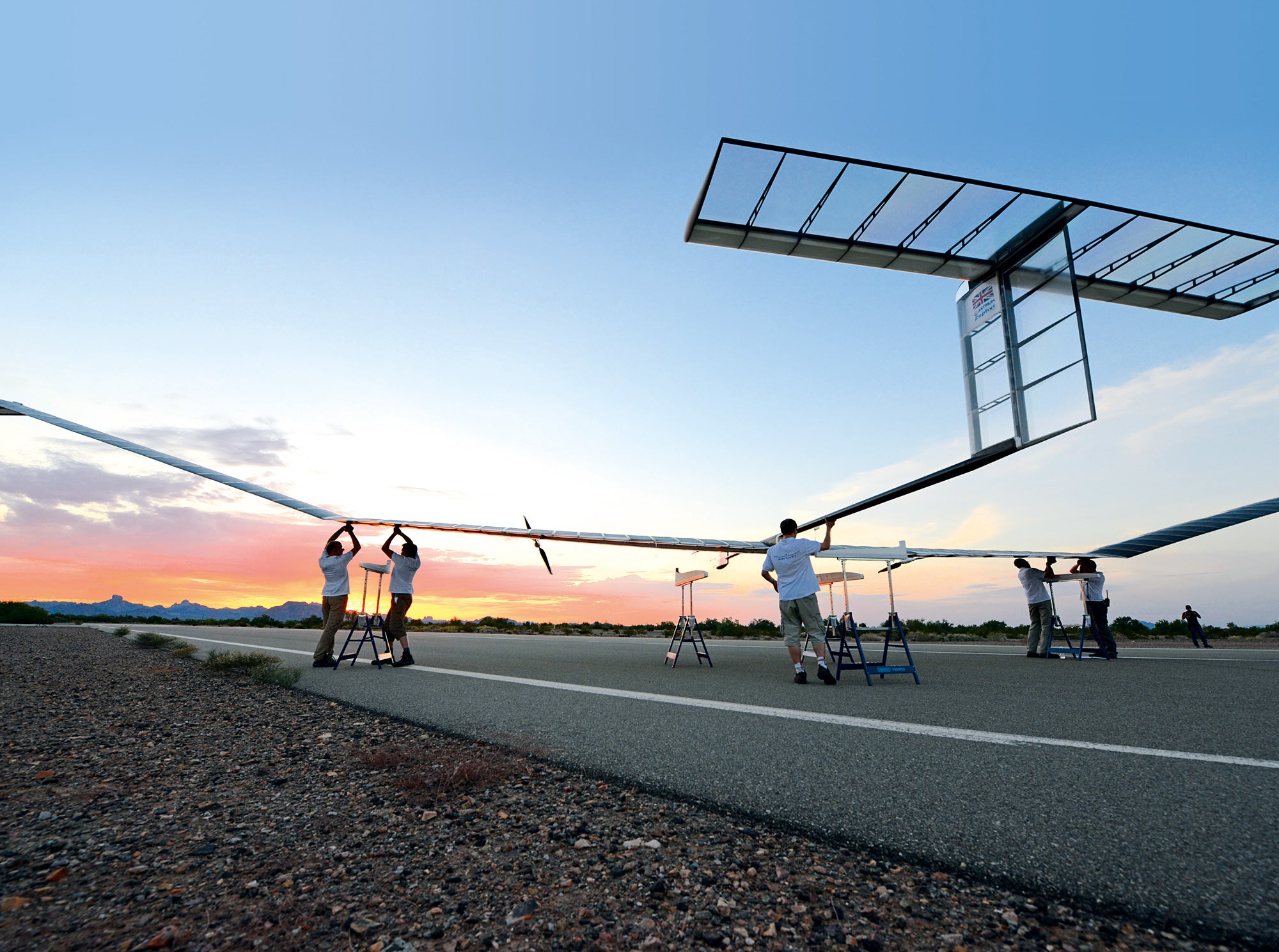The future of telecommunications could be drones – way up in the stratosphere
It has been estimated that a significant number of people across the globe do not have access to stable internet or mobile phone communications. High-altitude drones may be able to plug this gap, writes Steven Cutts


Lateral thinking has always been visible in technical innovation. In modern times, telecommunications have often focused on ground-based data links (such as mobile phone masts) and satellites in orbit around the Earth. More recently, several research groups have looked at the middle ground, a place that lies halfway between the Earth’s surface and the realm of outer space.
One such device is the very large, very low-density aircraft by the name of Zephyr. Unusually for a cutting-edge aerospace project, Zephyr has its origins in the United Kingdom.
For a forward-looking piece of engineering, Zephyr does feel a bit retro. It’s a device that is designed to fulfil the kind of role that we’ve come to expect from a satellite. In addition, it is far from being the only player in what has become an increasingly crowded field. Worldwide, there have been several attempts to develop high-altitude balloons and aircraft that could hover above a fixed point and provide data relay services to people on the ground.
One immediately apparent niche for this kind of technology would be those areas that are not currently covered by conventional mobile phone masts or satellite cover. A significant number of people across the globe do not have access to internet or mobile phone communications and very high-altitude drones may be able to plug this gap.
Zephyr was originally developed in the UK as an “Ultra Persistent Aircraft” It’s a very large and very lightweight aircraft that relies on solar panels for electricity. Since much of the power that stems from daylight is stored in batteries, the aircraft is also capable of flying in the dark, it is able to stay airborne for months. The first aircraft in this series was built in 2003 by Quinetiq and later came under the ownership of the European Airbus Group.
The entire construct weighs about 75kg and there is no human crew. It has been suggested that each aircraft has the capacity to replace 250 ground-based telecommunications towers. In the course of time, it may become possible for them to stay airborne for months on end without refuelling and without routine maintenance. At an altitude of 75,000ft, it should be able to stay above the weather and above all conventional air traffic. Some scientists refer to this environment as the “tropopause”, an almost airless sort of place where the average wind speed is less than 5 knots and where a gossamer-like structure like Zephyr will always feel at home. Such a location has legal advantages too. In the tropopause, the American Federal Air Administration does not regulate airspace.
Aircraft of this kind are sometimes referred to as high-altitude “pseudo satellites”, because they can remain on station for a long period of time and have the potential to replace the role normally filled by a space-based satellite.
One of the strengths of a traditional satellite in low earth orbit is its ability to remain on station without relenting and without consuming fuel. The entire aircraft can be launched from the ground by about half a dozen people and thrown skywards with the propellers already running.
The key to success for this technology is its ability to remain on station for several months at a time. When the aircraft does finally return to a ground station it would, presumably, be immediately replaced by a similar device. The record so far is 65 days of continuous operation and the maximum height achieved is 76,000ft.

During a recent flight, one of the prototypes flew the equivalent of seven times around the Earth or two-thirds of the way to the Moon. The mission was controlled by ground stations in Huntsville in Alabama, Yuma and Farnborough in Hampshire. On the downside, the aircraft actually crashed in August 2022 just a few hours before it might have broken the all-time record for continuous flight but for an experimental aircraft pioneering a new kind of flight path, this is still a solid achievement.
In spite of this, it’s important to remember that the commercial world would be more demanding. If a system of this kind were to be used as long-term data relay stations, it would be necessary to have at least one aircraft on station over each geographical sector that needed coverage 24/7. The commercial sector would refuse to tolerate an “occasional” crash, especially when there are ground-based alternatives available, albeit at a higher price. At the same time, it’s important to remember that the aerospace industry is notorious for touting fabulously ambitious projects that never get off the ground. In contrast, Zephyr is now a flight-proven design, albeit one that crashed in the summer of 2022.
Most of the recent trials have been performed in the US under the supervision of the American Army. Ultra-high altitude, very persistent aircraft might well have a military role and the US army is keen to explore their potential. Border patrol and military reconnaissance are both listed as applications for this kind of hardware.

Other companies have attempted to address the same issue using much more mundane technology. Both “ultra persistent aircraft” and “balloons” are increasingly being seen as an alternative to ground-based data links. The same kind of capability could be used in the pursuit of Earth resources and Earth observation, intruding into the process on work that has previously been performed by satellites.
Some years ago, the American tech giant, Google (Alphabet) decided to spend an astonishing sum of money on its very own “Project Loon”. This predictably ambitious plan was intended to provide internet-based communication to people living in more remote parts of the world. Central to project Loon was the building of large helium balloons that would be released into the upper atmosphere where they would function as data relay stations.
Project Loon actually got as far as launching a few balloons in the skies above New Zealand. A few preliminary points of contact were established, several major technical hurdles were overcome and things were looking good. Unfortunately, by the end of 2021, it had failed to convince its own financial backers and in spite of the not-insignificant technological progress, Alphabet decided that there was no long-term future for this approach. Apart from the sheer scale of the engineering challenges involved, projects of this kind are continuously undermined by the competition from other forms of internet communication, just about all of which are progressing at a frightening speed.

However, the Loon escapade does remind us of another phenomenon. Big tech is now incredibly powerful and there are individual companies in this field that can deploy research and development budgets that would put some European governments to shame. Remember that it is not unusual for Google to report a profit of $50bn in a single quarter. These companies were founded by very innovative and very ambitious people who continue to act in character long after they have achieved outstanding success in their initial field. Such an astonishing marriage of very high R&D spending combined with modern America’s willingness to take risks is driving the tech sector in directions that many of us could barely have thought possible.
The web-based company, Meta (Facebook) is not afraid to deploy its own resources in pursuit of new ideas and is now investing in a number of very farsighted projects around the world. Mark Zuckerberg’s company has backed the “Aquila” System. The British-based Ascenta was contracted to develop a laser-based system that would maintain contact with the ground. The Facebook Aquila was another solar-powered drone-like aircraft that was intended to function as an atmospheric satellite providing internet access in remote areas. Having been constructed in Bridgewater, England, it was taken to Arizona for test flights but in 2016, one machine was damaged on landing.
In comparison to the dynamic young start-ups of Silicon Valley, Britain’s Ordnance Survey Group might sound like a Victorian relic, but Ordnance Survey is now also developing their own high-altitude drone to help the map makers of tomorrow. This vehicle is currently under development by the UK-based company Astigan, which the Ordnance Survey part owns. Their A3 aircraft weighs 149kg and has a 38m wingspan. Like Zephyr and most other aircraft considered in this group, the A3 draws its power from the Sun. The developers believe that it could maintain an altitude of 67,000ft for as long as 90 days.
New materials, fearless researchers and the injection of astronomical amounts of research funding by governments, big tech and the Pentagon are pushing pilotless aircraft to new heights all over the world.




Join our commenting forum
Join thought-provoking conversations, follow other Independent readers and see their replies
Comments